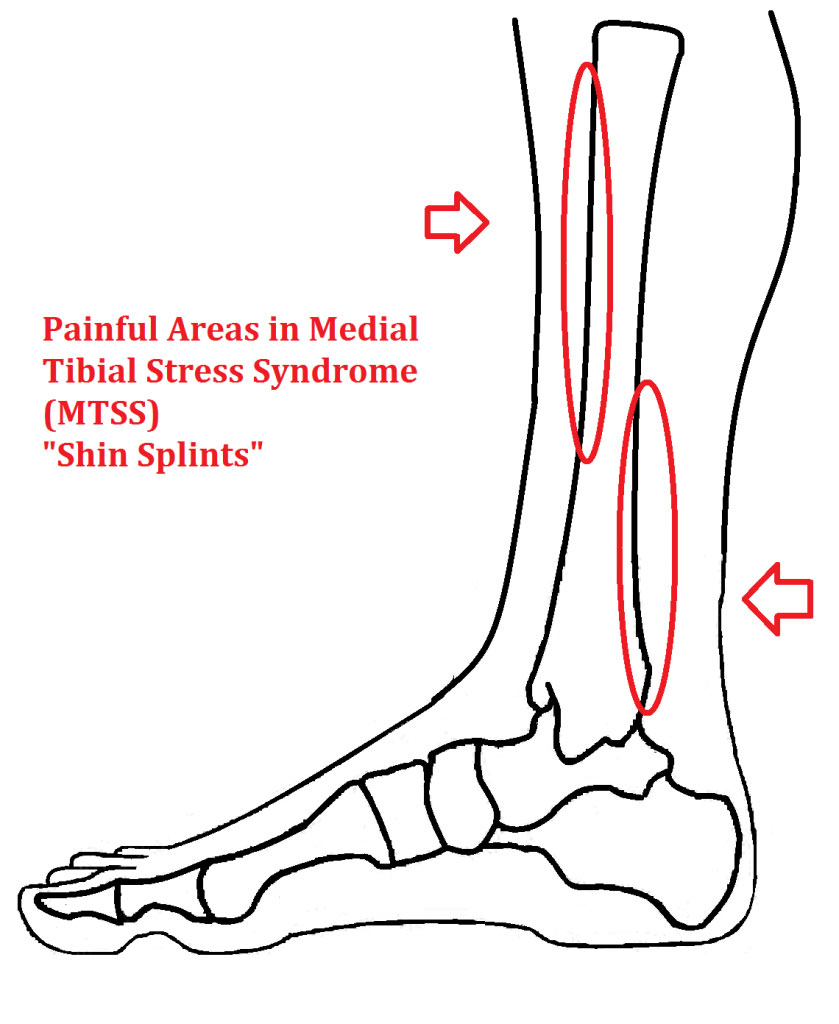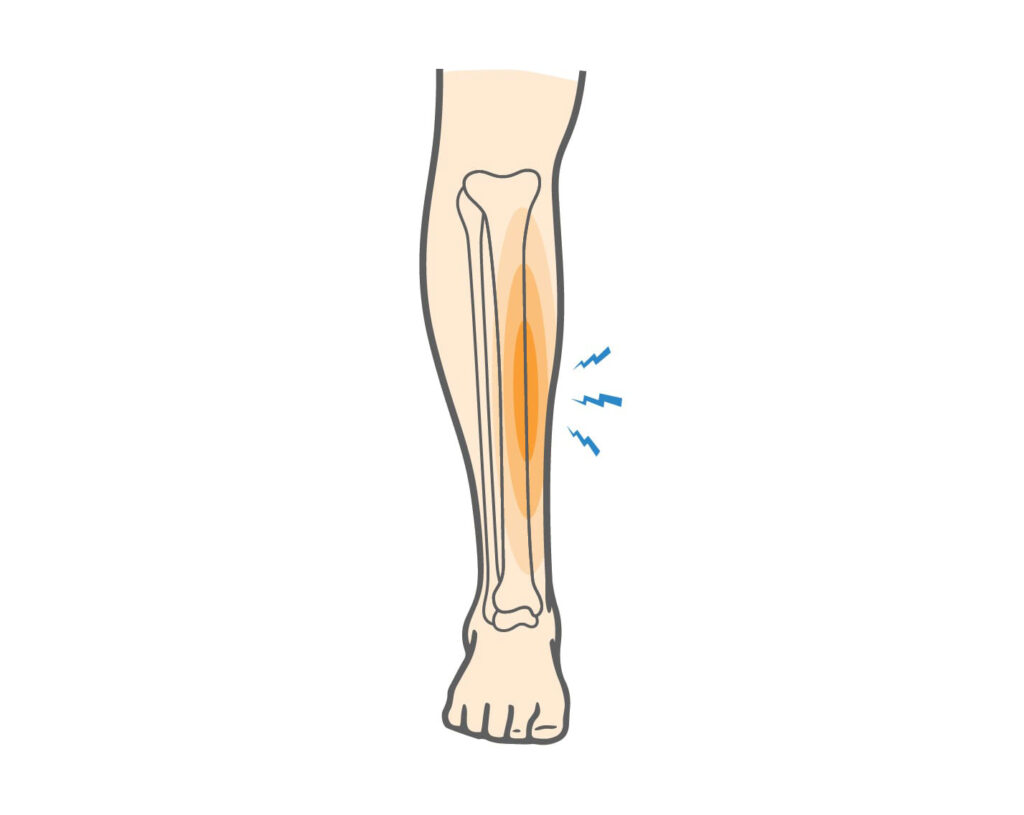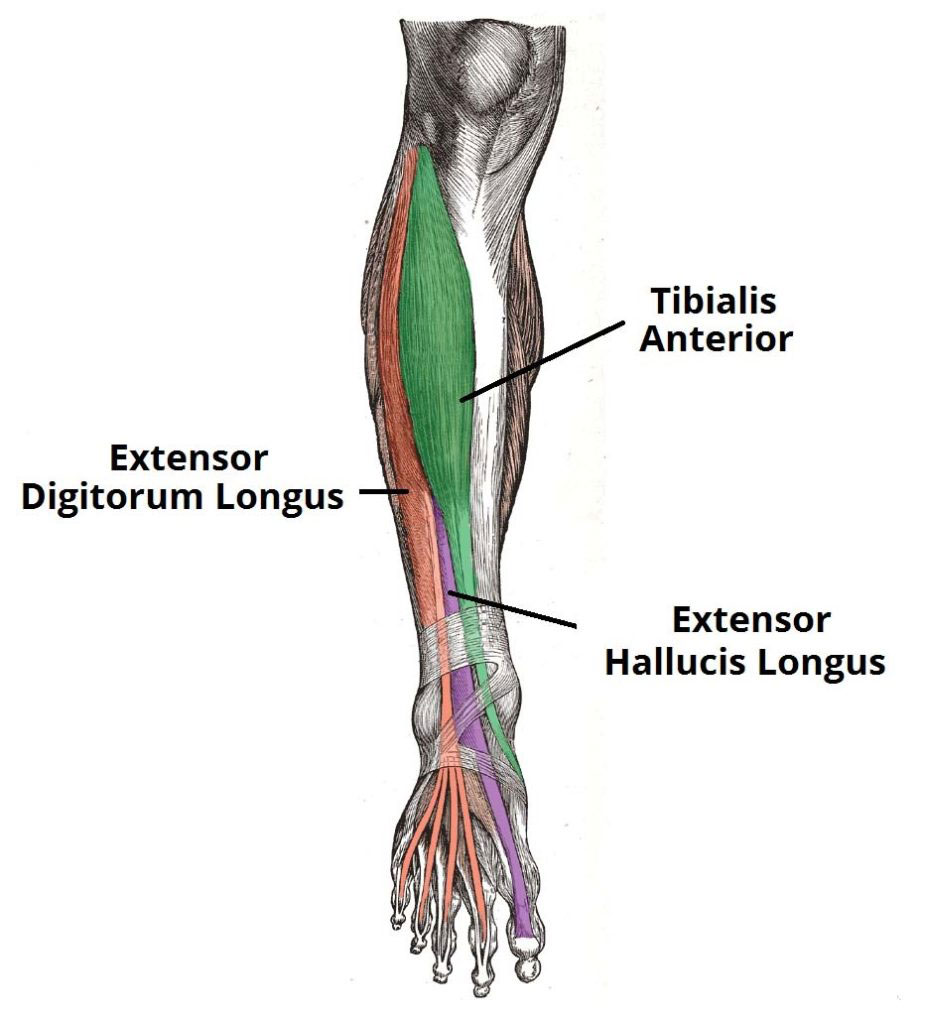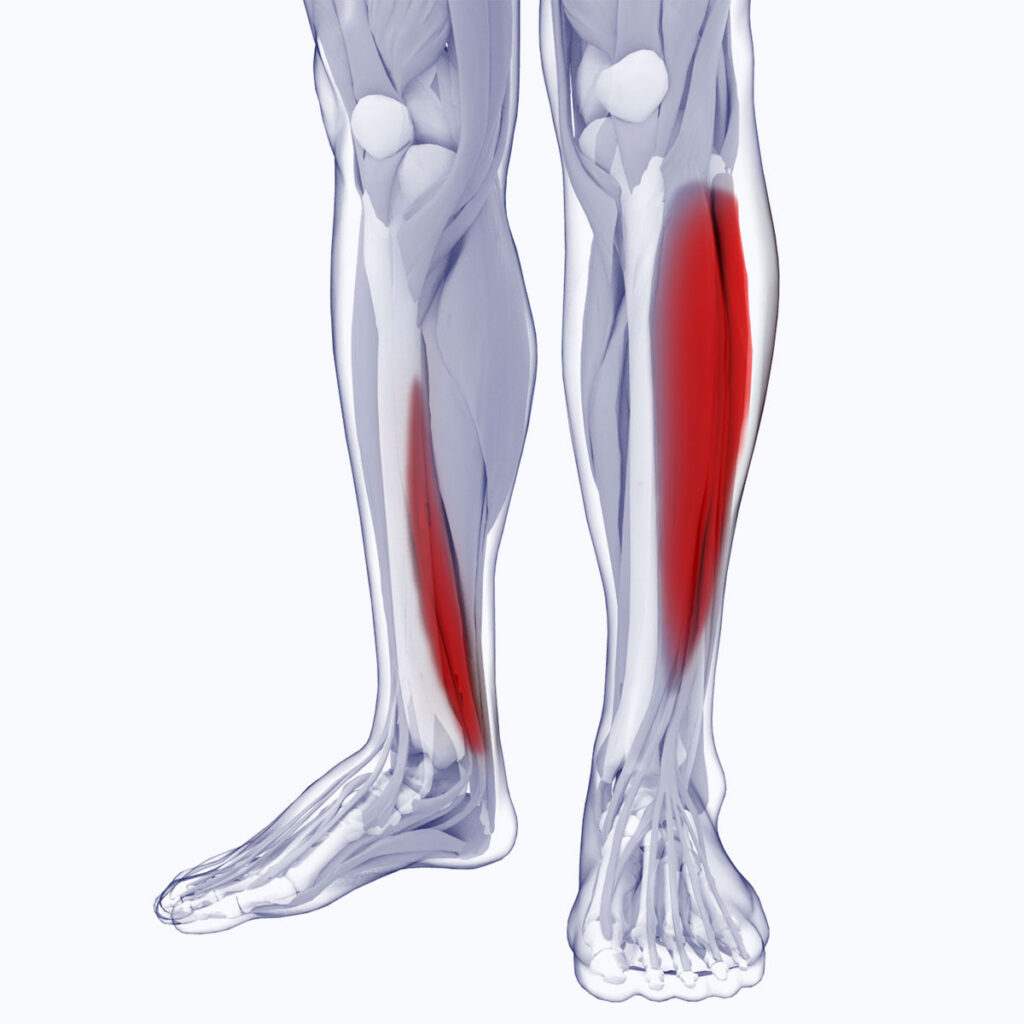Shin Splints
Shin Splints
In this guide, you will learn everything there is to know about shin splints. What are they? What causes them? How can you treat them? We will answer all of your questions and more. So, whether you are a beginner runner who is just starting to experience shin splints for the first time or you are someone who has been dealing with this condition for years, keep reading!

Shin splints: An introduction
Shin splints refer to pain along the inner edge of the shinbone (tibia) — the large bone in the front of your lower leg. Shin splints often occur during activities that involve running or jumping.
Shin splints are usually caused by overuse of the lower leg muscles and tendons — the tissue that connects muscle to bone. This can happen when you suddenly increase the intensity or duration of your workouts, or when you change your exercise routine. Poorly cushioned shoes and hard surfaces also can contribute to shin splints.

Symptoms of Shin Splints
Shin splints develop if you feel pain along the inner edge of your shinbone during or after exercising. The shin splint pain might be dull at first, but it can become more severe as you continue to exercise. Shin splints usually develop gradually and often occur in both legs.
How are Shin Splints diagnosed?
There are several ways to diagnose shin splints, but the most common is through a physical examination. Your doctor will ask you about your symptoms and then palpate (feel) along your shins to look for tenderness or swelling. He or she may also order X-rays, although they are not always necessary. In some cases, an MRI may be ordered to rule out other possible causes of your shin pain, such as stress fracture or medial tibial stress syndrome.

Treatment for Shin Splints
Once shin splints have been diagnosed, the next step is treatment. Treatment typically involves a combination of rest, ice, and stretching. You may also be advised to take over-the-counter anti-inflammatory medication such as ibuprofen to help reduce pain and swelling. If your shin splints are severe, your doctor may recommend wearing a splint or boot to immobilize your leg and allow it to heal.
If conservative treatment does not provide relief, you may need to consider other options such as physical therapy, steroid injections, or even surgery. However, these options are usually only considered if conservative measures have failed and the pain is severe.
Preventive Measures for Shin Splints
There are several things you can do to prevent yourself from developing shin splints from occurring or recurring. First, make sure to wear proper shoes when participating in any type of activity.
Second, always warm up properly before exercising and cool down afterward. Third, avoid doing too much too soon by gradually increasing the intensity and duration of your workouts.
Finally, cross-train by participating in different activities to help reduce the risk of overuse injuries.
If you are prone to shin splints or have suffered from them in the past, it is important to take steps to prevent their recurrence. Shin splints can be a frustrating and painful condition, but with proper treatment and prevention, they can be managed.

Outlook for people with Shin Splints
Most people with shin splints will recover with a few weeks of treatment. However, some people may experience recurrent or chronic shin splints. If you have shin splints, it’s important to take steps to prevent them from recurring.
If you have chronic shin splints, you may be at risk for developing other problems, such as stress fractures. Stress fractures can occur when the muscles around the shin are unable to absorb the impact of your activities. These fractures can be serious and require a prolonged period of rest and rehabilitation.
If you have shin splints, be sure to talk to your doctor about the best treatment options for you. There are a number of effective treatments available that can help you recover quickly and reduce risk factors of developing chronic shin splints or other problems.

Frequently Asked Questions
Shin splints refer to pain along the inner edge of the shinbone (tibia). This pain is typically caused by overuse of the lower leg muscles and tendons, which results in inflammation. Shin splints often occur in runners and other athletes who participate in high-impact activities.
Symptoms of shin splints include pain and tenderness along the inside edge of the shinbone, swelling in the affected area, and sometimes bruising. The pain is typically worse with activity and may improve with rest.
Treatment for shin splints typically includes a combination of rest, ice, and stretching. More severe cases may require orthotics or other supportive devices. Surgery is rarely necessary.
Wearing proper shoes and slowly increasing the intensity of your workouts can help prevent shin splints. If you are prone to shin splints, be sure to warm up properly before exercise and cool down afterward. Stretching the lower leg muscles can also help prevent shin splints.
To relieve shin splints, you can try the following:
-Rest: Take a break from activities that may have caused the shin splints.
-Ice: Apply ice to the painful area for 20 minutes several times a day.
-Compression: Wrap your shins with an elastic bandage to reduce swelling.
-Elevation: Prop your legs up on pillows when you’re lying down to reduce swelling.
If home remedies don’t seem to be helping, your doctor may recommend you to get an appointment with a physical therapist. Surgery is rarely needed for shin splints.
There are several ways to tell if you have shin splints. The first is by looking for pain along the inside edge of your shin bone.
This is typically the most common symptom of shin splints. You may also notice swelling or tenderness in this area.
Another way to tell if you have shin splints is by touching the affected area and feeling for any bumps or lumps.
Finally, you may also experience a dull ache in your shin during activities such as walking or running. If you experience any of these symptoms, it is important to see orthopaedic surgeons so that they can properly diagnose and treat your condition.
The main cause of shin splints is overuse. This can happen when you do too much activity too soon, or if you don’t take enough time to rest between workouts.
Shin splints can also be caused by wearing shoes that don’t fit well or provide enough support. If you have flat feet, you may be more likely to get shin splints.
That depends on the severity of the injury. For a milder case, shin splints may take a few weeks to heal.
However, for more severe injuries, it may take several months for the pain to subside and for full recovery to occur.
Shin splints are particularly common among runners, so if you’re a runner who is dealing with shin splints, be sure to take some time off from running to allow your body to heal.
Cross-training with low-impact activities like swimming or cycling can help you stay in shape while your shins are healing.
Have you been injured at some point in your journey?
Are you not achieving your highest level of function?
We’ve helped hundreds of people at all walks in life
get back to performing their best painfree!
3 Ways to Level Up Your Rehab and Injury Prevention With Us




